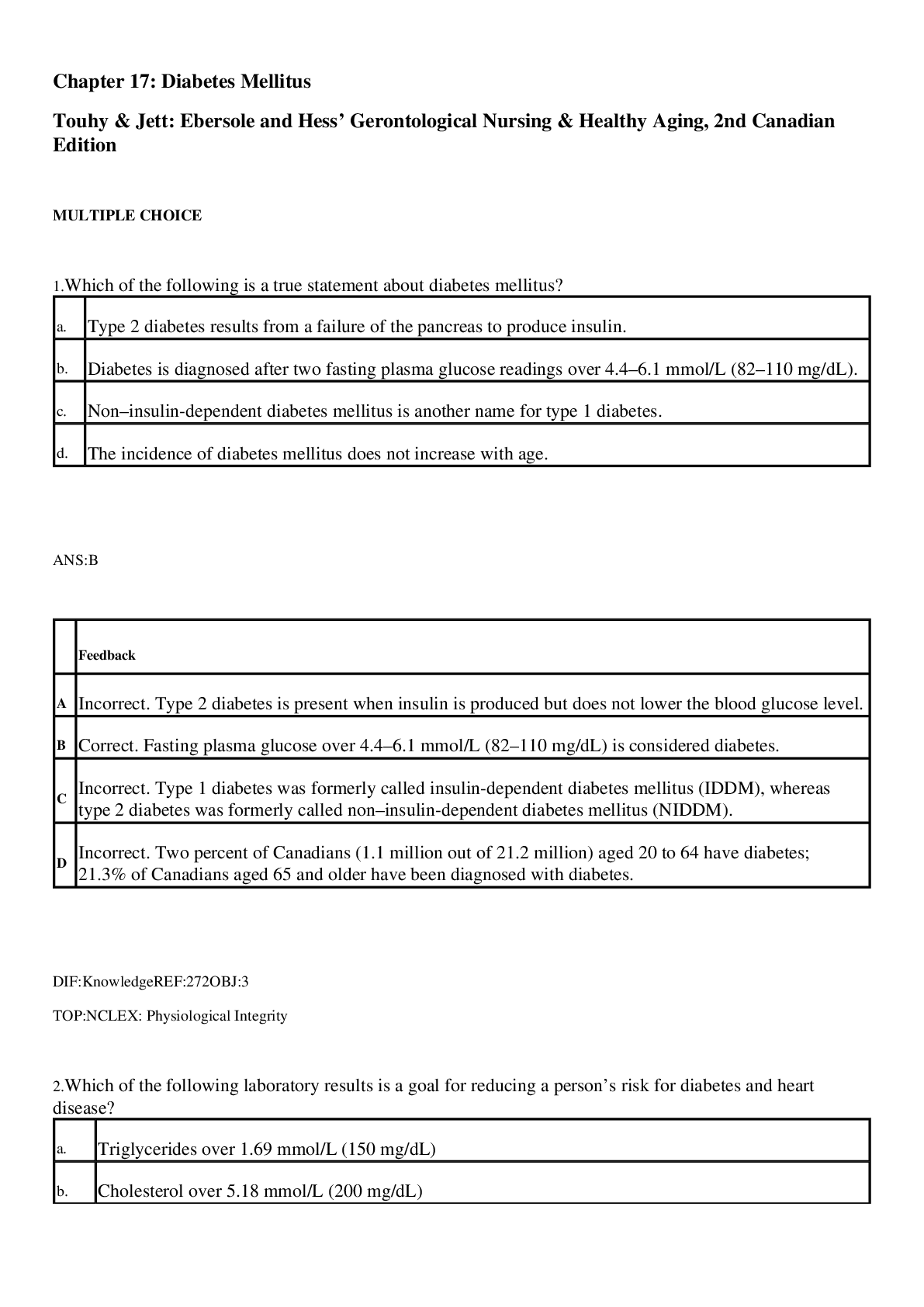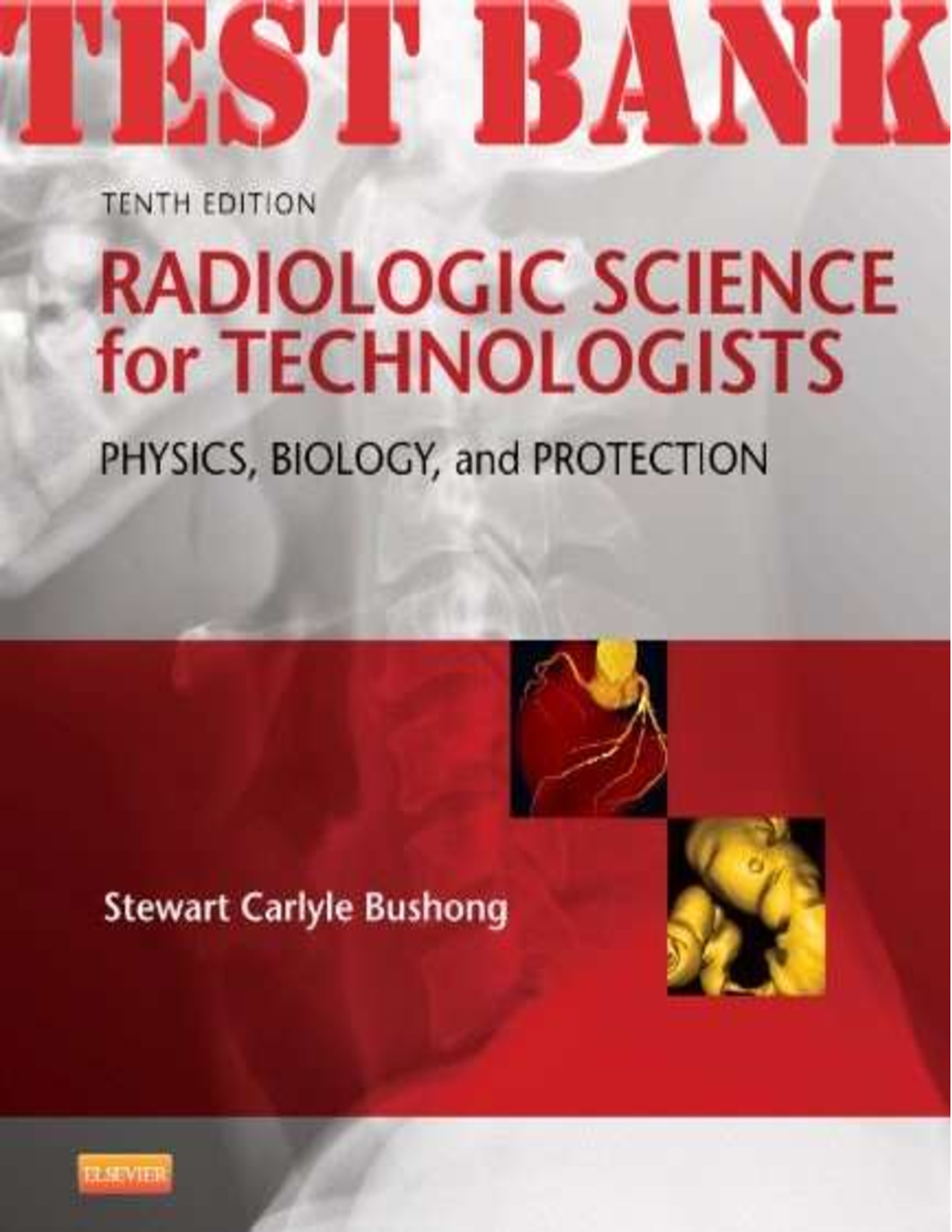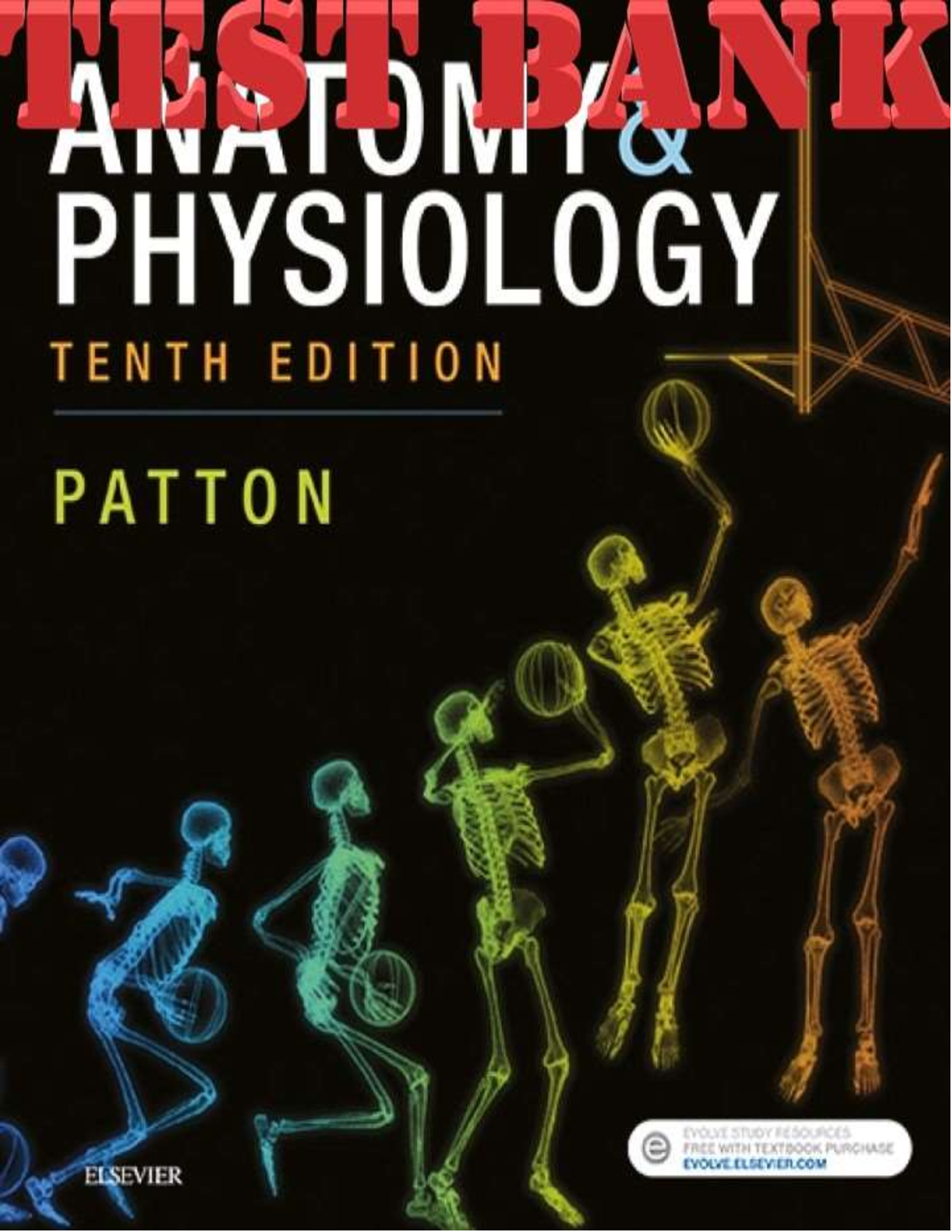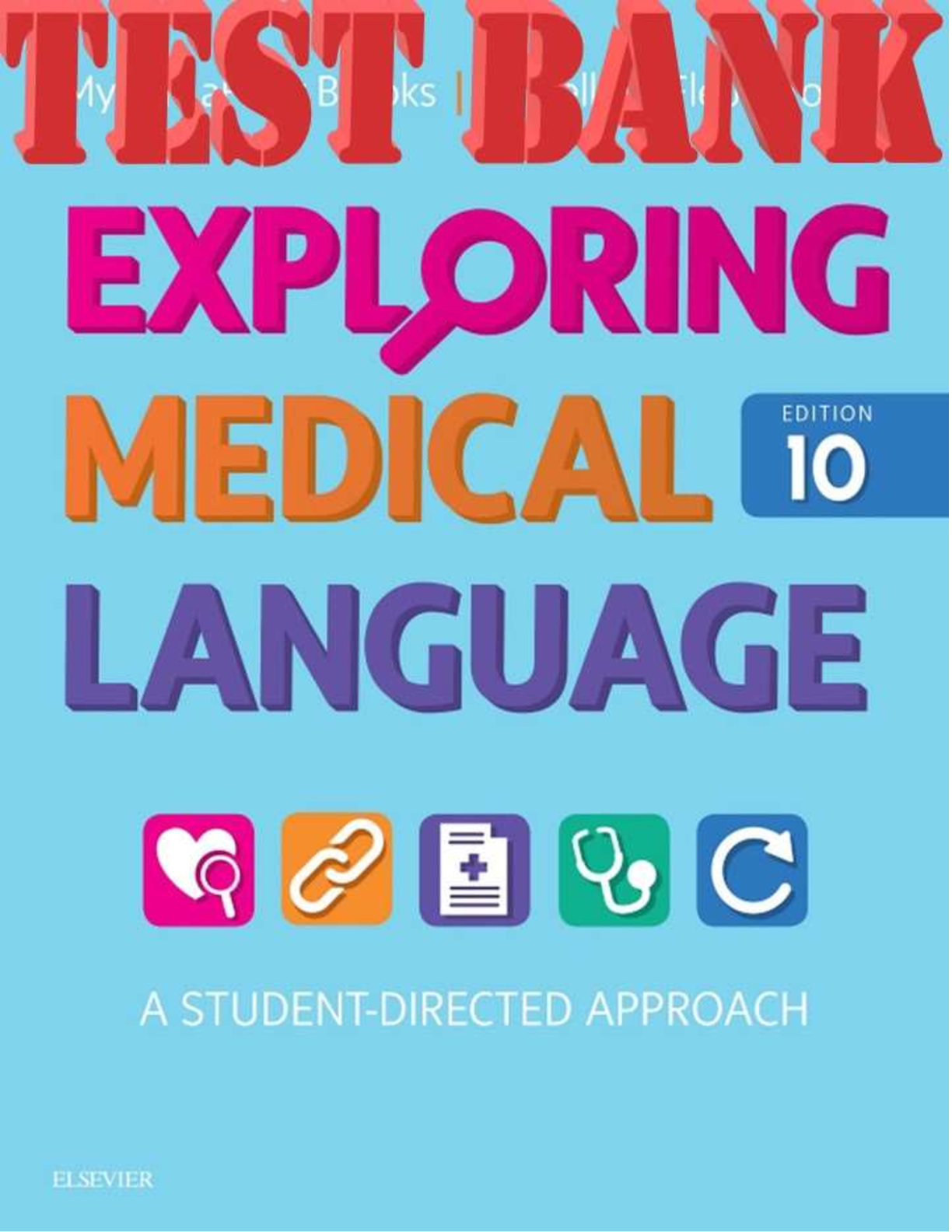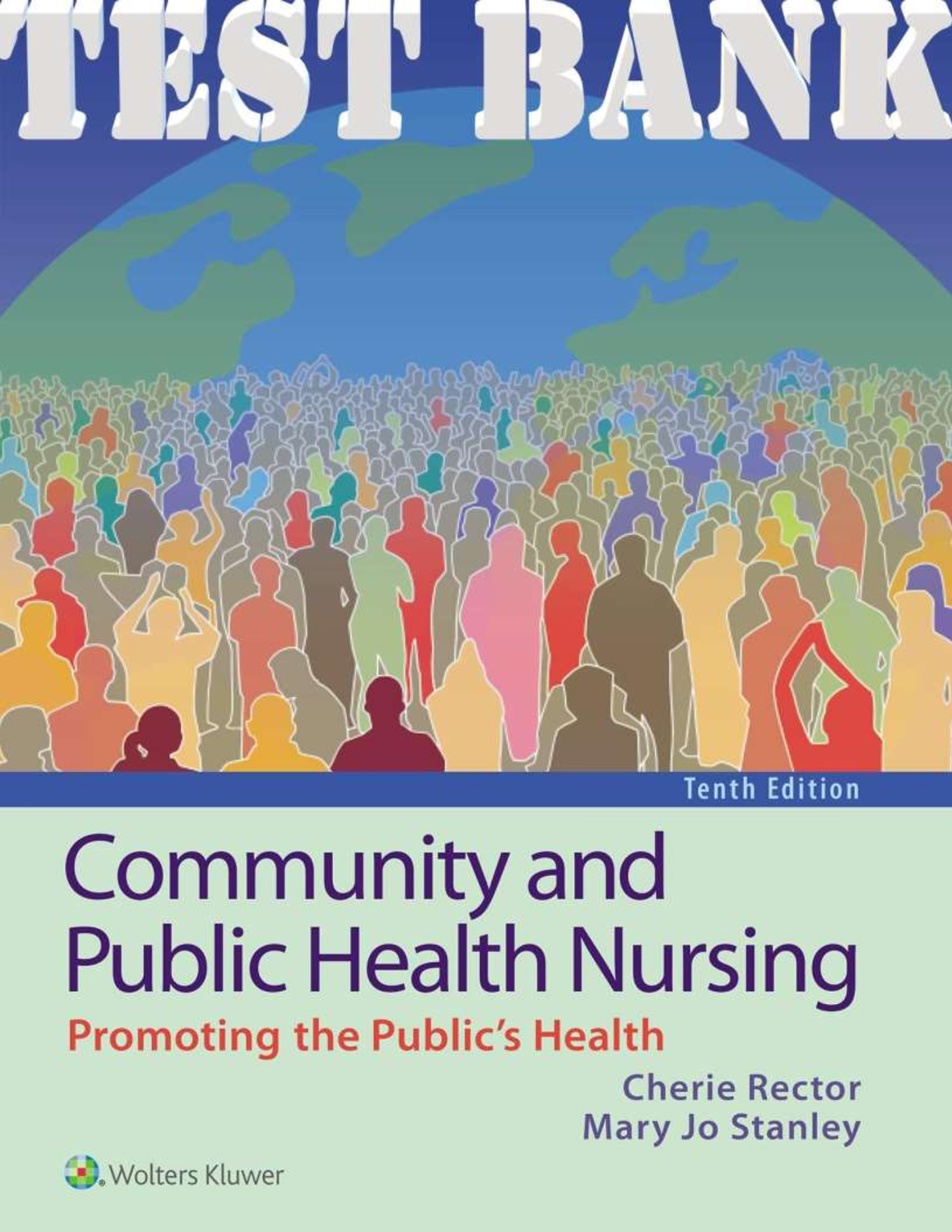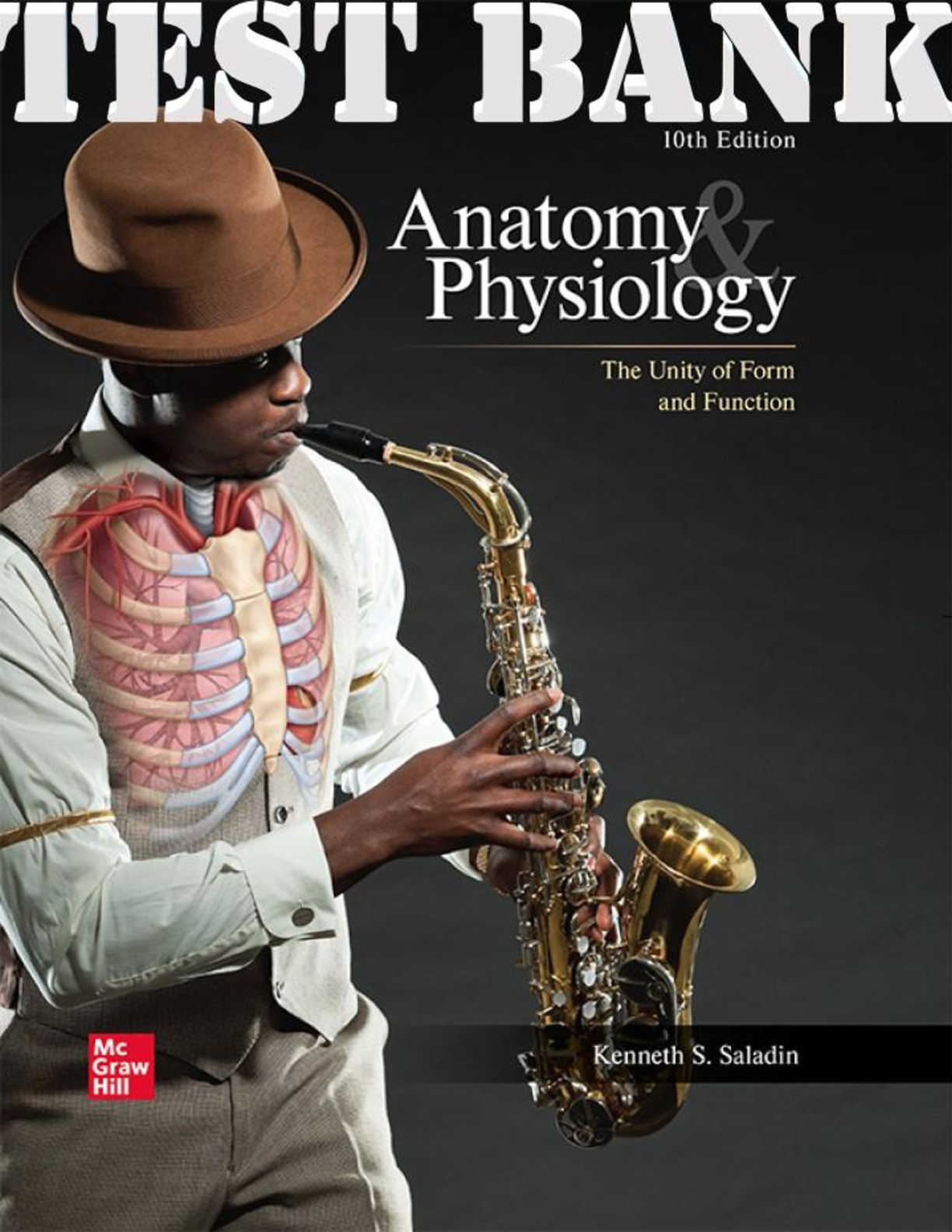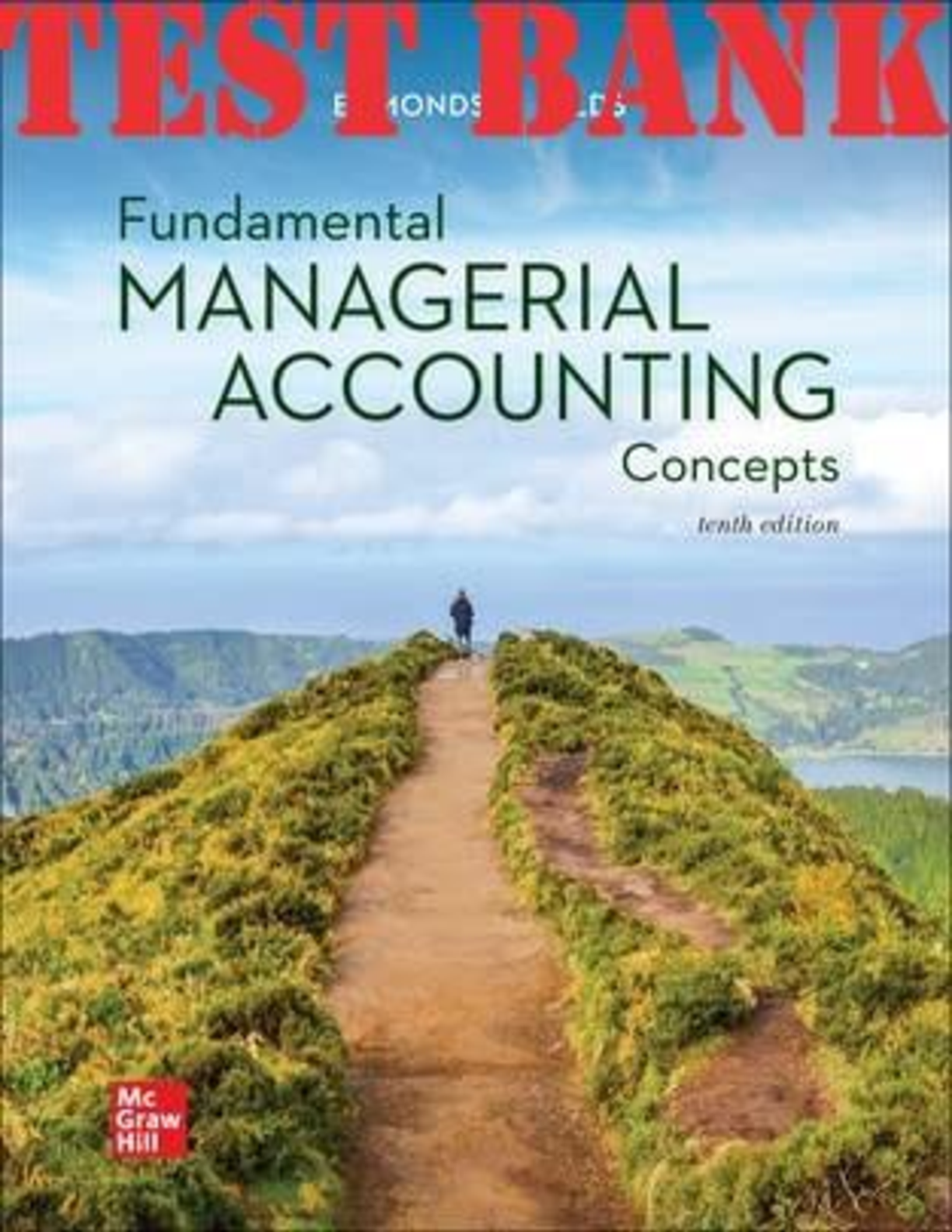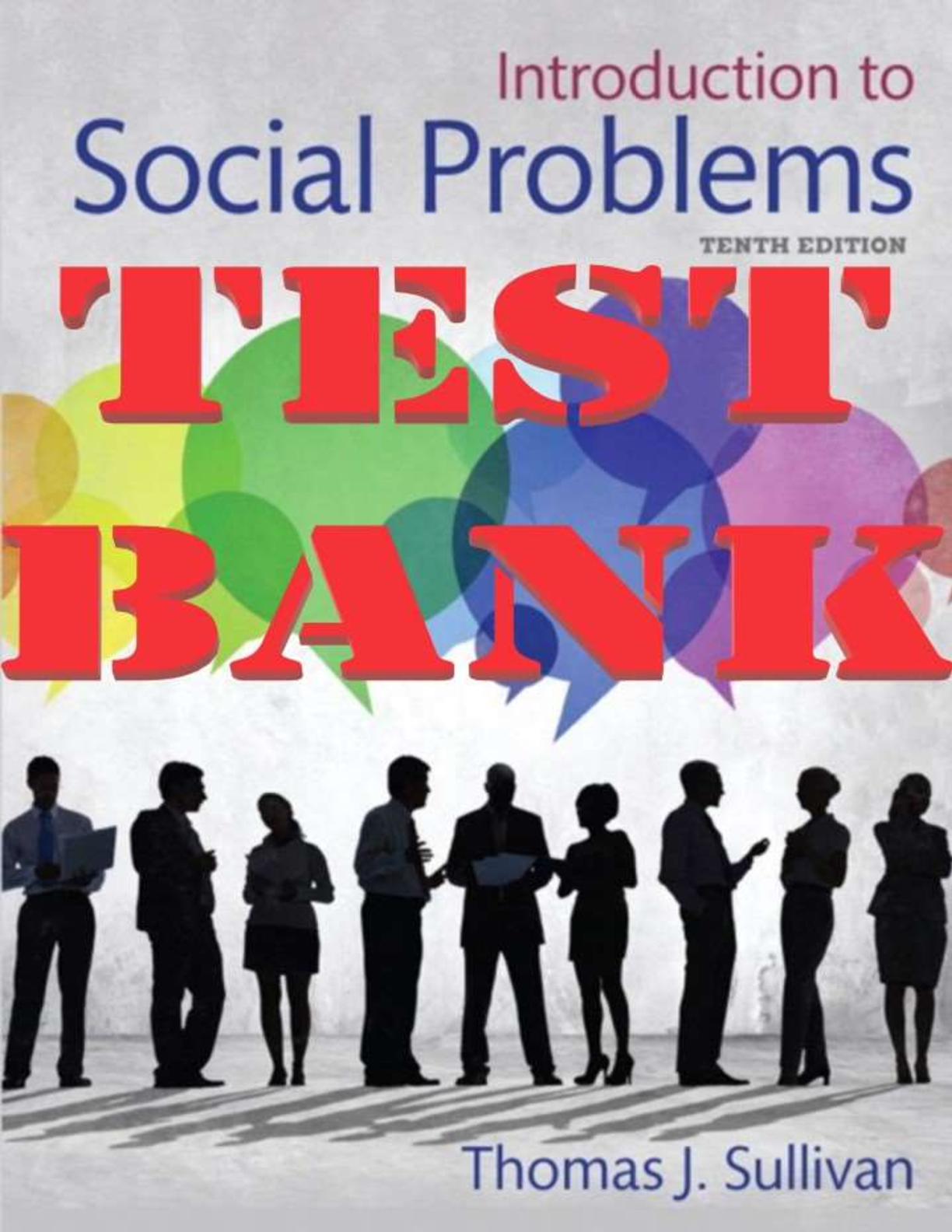*NURSING > TEST BANK > TEST BANK FOR PORTH’S PATHOPHYSIOLOGY 10TH EDITION BY NORRIS CHAPTER 25: Structure and Function of (All)
TEST BANK FOR PORTH’S PATHOPHYSIOLOGY 10TH EDITION BY NORRIS CHAPTER 25: Structure and Function of the Cardiovascular System
Document Content and Description Below
1. As part of presurgical teaching for patients who are about to undergo a coronary artery bypass graft, a nurse is performing an education session with a group of surgical candidates. Which of the fo... llowing teaching points best conveys an aspect of the human circulatory system? A) “The blood pressure varies widely between arteries and veins and between pulmonary and systemic circulation.” B) “Only around one quarter of your blood is in your heart at any given time.” C) “Blood pressure and blood volume roughly mimic one another at any given location in the circulatory system.” D) “Left-sided and right-sided pumping action on each beat of the heart must equal each other to ensure adequate blood distribution.” Ans: A Feedback: There is a large variation between the higher pressure in the systemic circulatory system and arteries and the lower pressure in the pulmonary system and veins. Approximately 8% of the blood supply is in the heart at any given time. Blood pressure and blood volume are inversely proportionate. The body is able to accommodate short-term differences in left-sided and right-sided output. 2. In which of the following situations would blood most likely rapidly relocate from central circulation to the lower extremities? A) A client undergoes a stress test on a treadmill. B) A client does isotonic exercises in a wheelchair. C) A client is helped out of bed and stands up. D) A client reclines from a sitting to supine position. Ans: C Feedback: During a change in body position, blood is rapidly relocated from the central circulation (when the patient is recumbent) to the lower extremities (when the patient stands up). This results in a temporary drop in blood pressure known as postural hypotension and reflects the redistribution of blood in the body. 3. Which of the following statements most accurately captures a principle of blood flow? A) With constant pressure, a small increase in vessel radius results in an exponential increase in blood flow. B) Blood flow is primarily determined by blood viscosity and temperature. C) Blood flows most quickly in the small diameter peripheral capillaries. D) Smaller cross-sectional vessel area is associated with lower flow velocity. Ans: A Feedback: Doubling the radius of a vessel is associated with a fourth-power increase in flow, provided pressure remains constant. Blood flow is primarily a function of blood pressure, resistance, and viscosity. The small size of capillaries is associated with quite slow velocity, given their large total combined cross-sectional area. Smaller cross-sectional area is associated with greater velocity. 4. A 72-year-old female has been told by her physician that she has a new heart murmur that requires her to go visit a cardiologist. Upon examination, the cardiologist informs the patient that she has aortic stenosis. After the cardiologist has left the room, the patient asks, “What caused this [aortic stenosis] to happen now?” The clinic nurse responds, A) “Heart murmurs result from tumultuous flow through a diseased heart valve that is too narrow and stiff. This flow causes a vibration called a murmur.” B) “Aortic stenosis is commonly seen in elderly patients. Basically, there is a blockage in the valve that is causing blood to pool, causing decreased velocity of flow.” C) “This is caused by a tear in one of the papillary muscles attached to the valve. They can do a procedure where they thread a catheter into the heart and reattach the muscle ends.” D) “Because of the high amount of energy it takes to push blood through the aortic valve to the body, your valve is just had to work too hard and it is weakening.” Ans: A Feedback: Heart murmur results from turbulent flow through a diseased heart valve that may be too narrow, too stiff, or too floppy. This turbulent flow causes a vibration called a murmur. [Show More]
Last updated: 1 year ago
Preview 1 out of 11 pages
Instant download
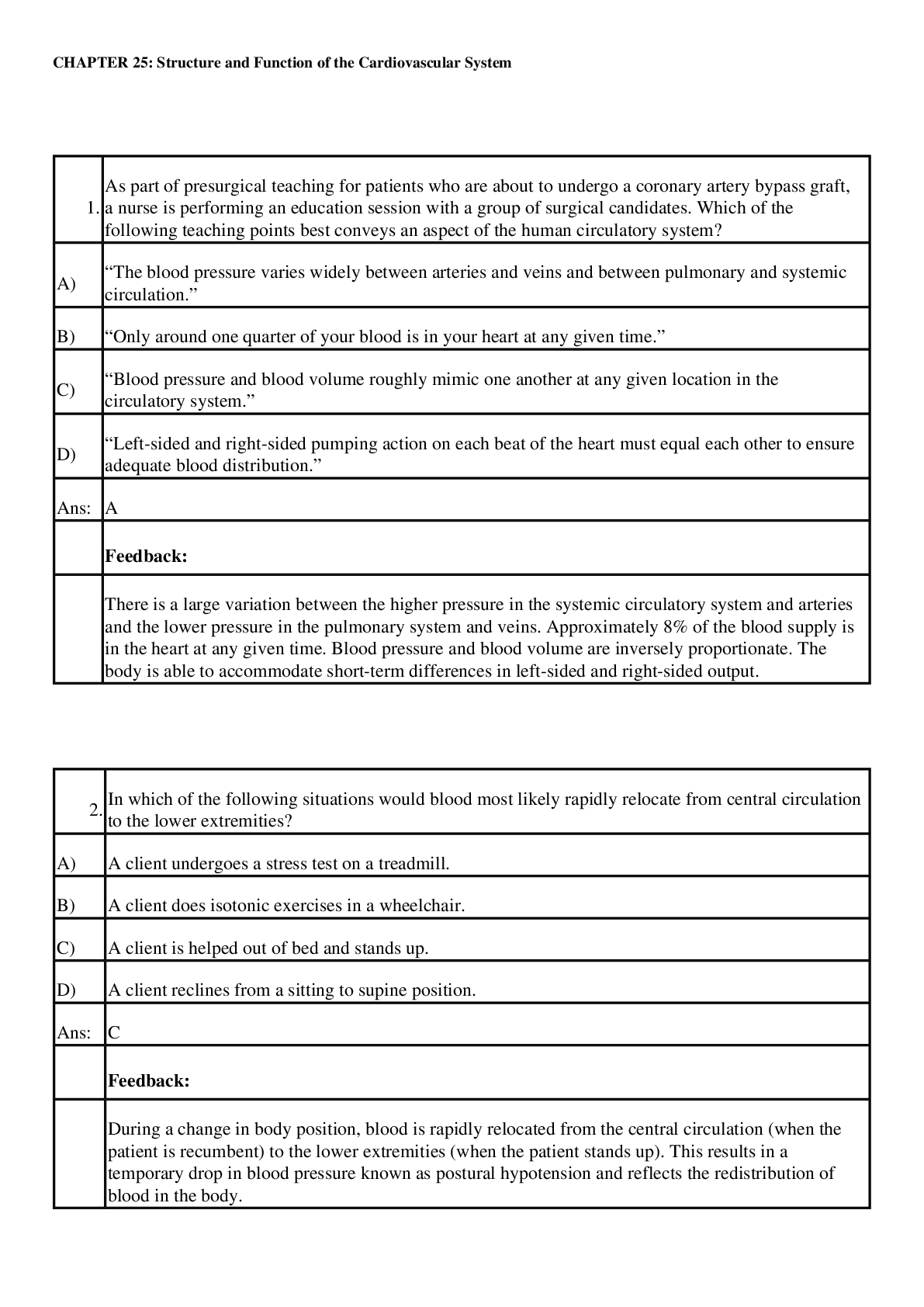
Buy this document to get the full access instantly
Instant Download Access after purchase
Add to cartInstant download
Also available in bundle (1)

TEST BANK FOR PORTH’S PATHOPHYSIOLOGY 10TH EDITION BY NORRIS ALL CHAPTERS
THIS PAPER CONSISTS OF ALL CHAPTERS
By GoldenA 3 years ago
$24
44
Reviews( 0 )
Document information
Connected school, study & course
About the document
Uploaded On
Mar 01, 2021
Number of pages
11
Written in
Additional information
This document has been written for:
Uploaded
Mar 01, 2021
Downloads
0
Views
90


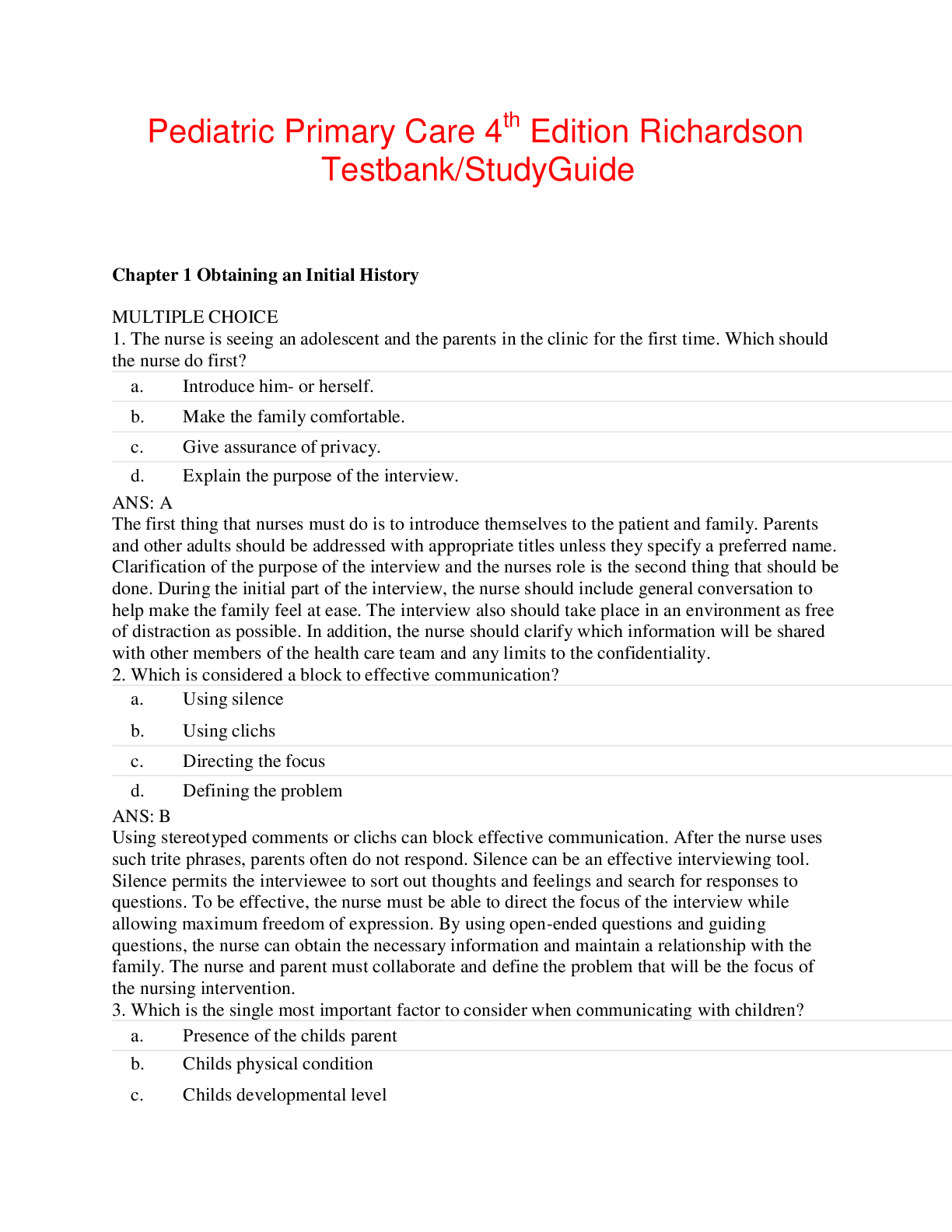

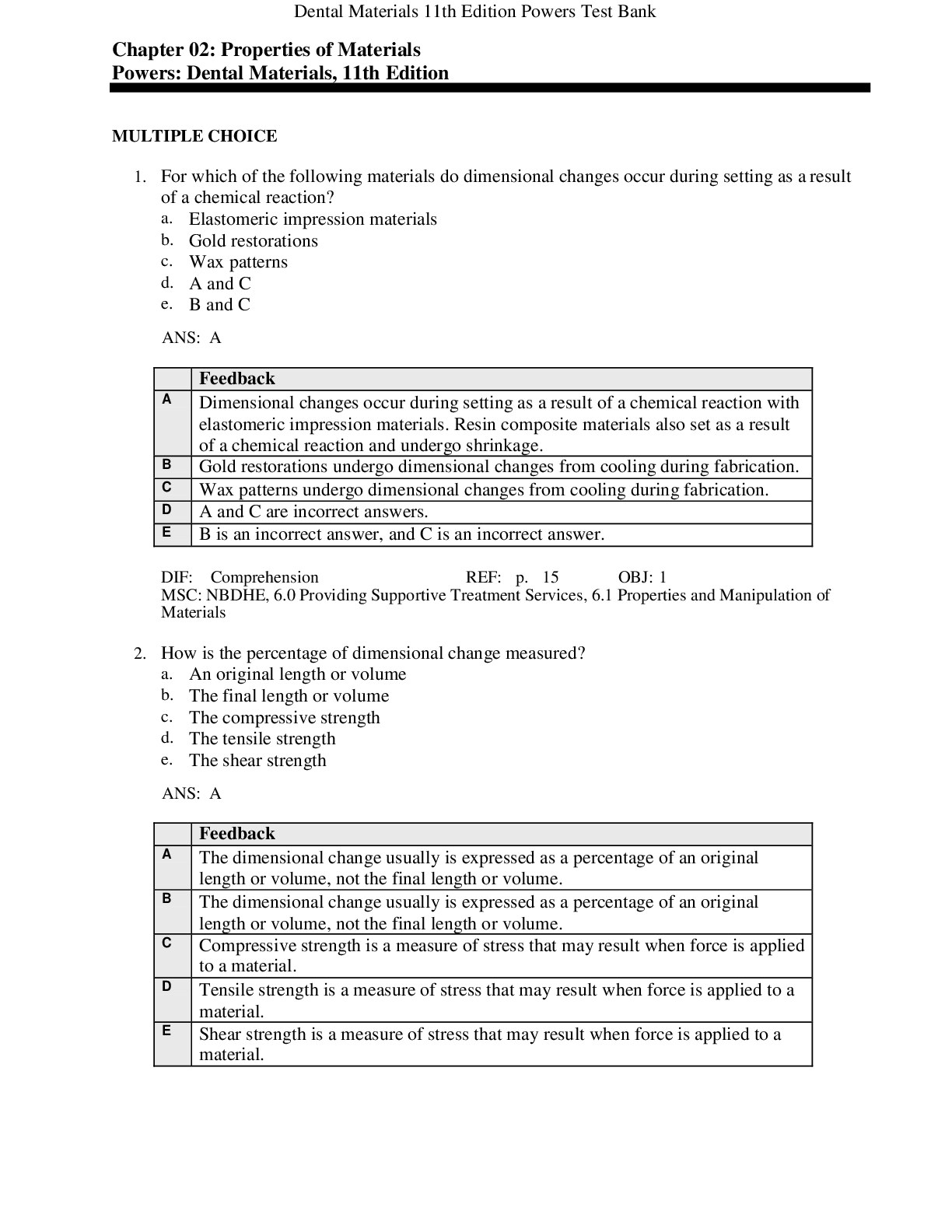
.png)
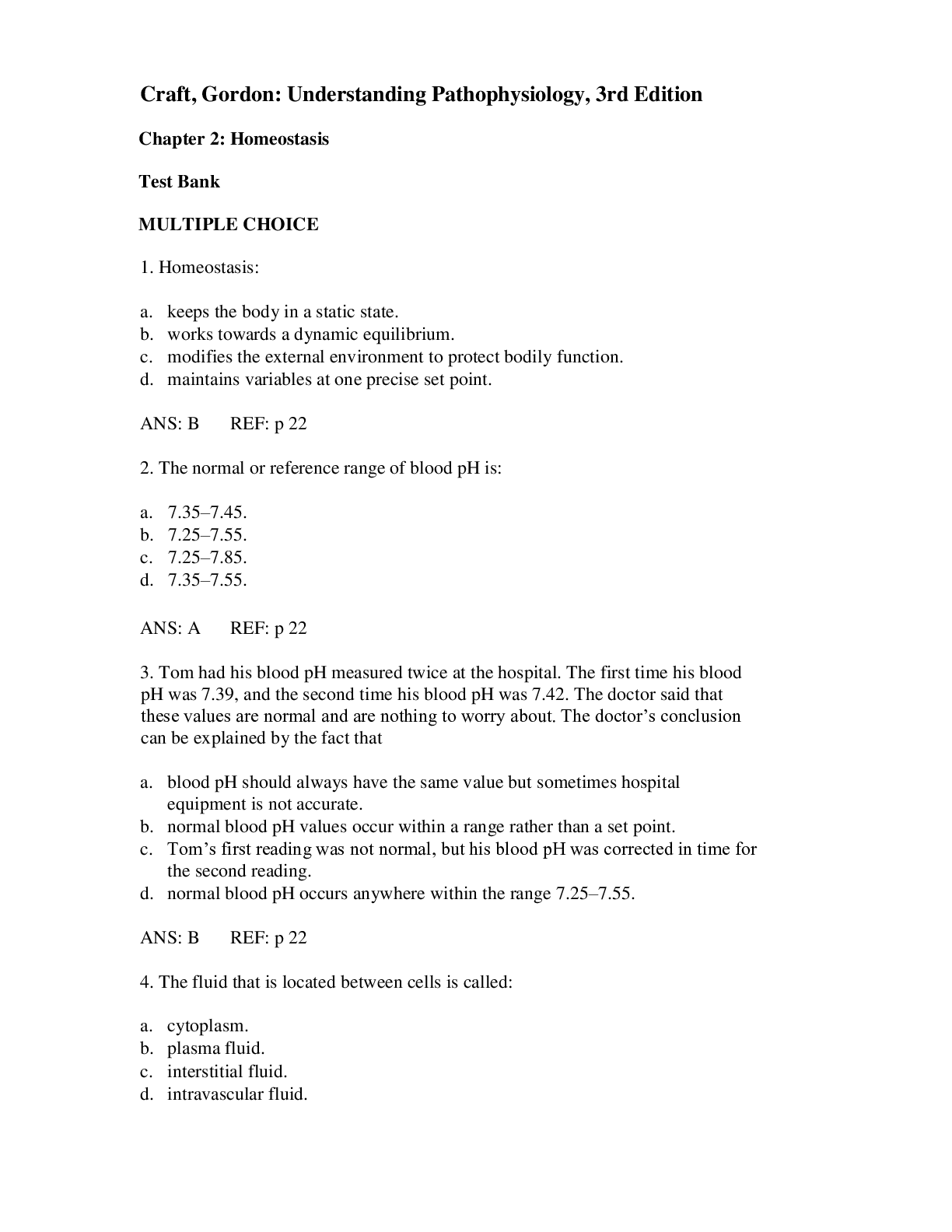



.png)
.png)
